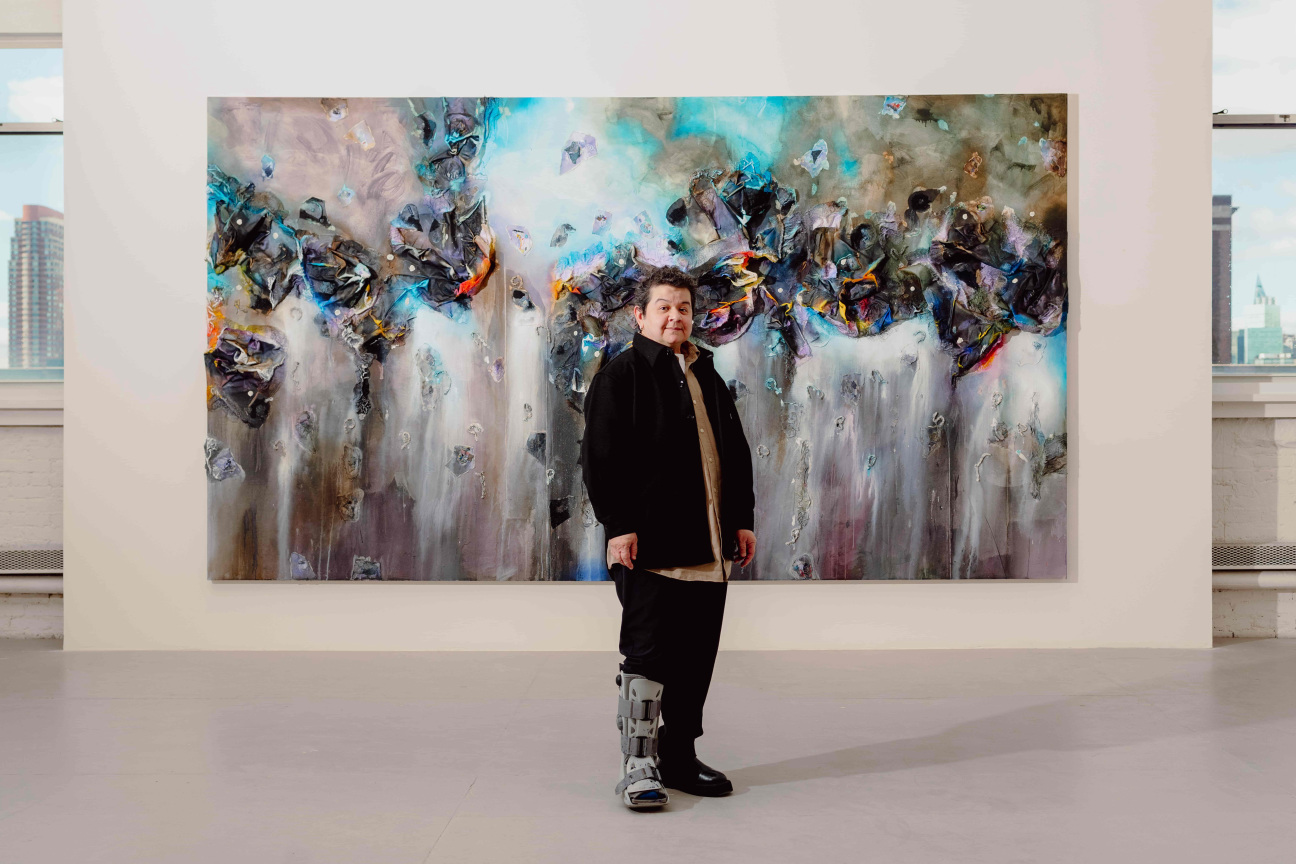
“In my sketchbook over and over for years there was this recurring little figure trying to break out of an enclosure,” the painter Leslie Martinez said during a walkthrough of their new solo show at MoMA PS1. “Among many other frameworks, it’s about transness and this desire to escape and be born and form oneself. It’s about formation, I think.”
The exhibition, “Leslie Martinez: The Fault of Formation,” is the Dallas-based artist's New York museum debut. Coinciding with a two-person show (with Angel Otero) at the Speed Museum in Louisville, Kentucky, the MoMA PS1 presentation includes three rooms of Martinez’s recent paintings—among them, several impressive, large-scale new commissions that affirm the expressive and political potential of abstraction.
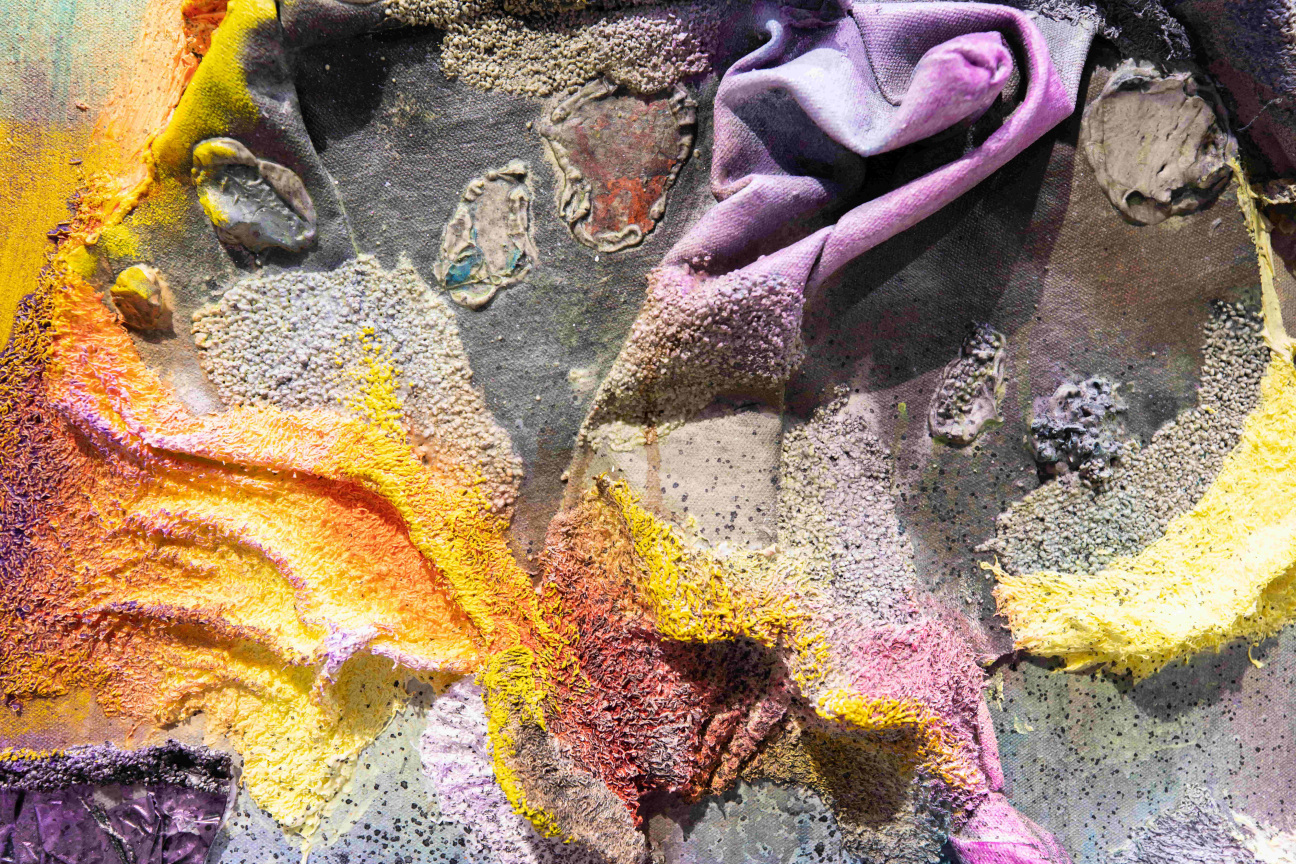
The exhibition is a full immersion into Martinez’s collage-based and sometimes sculptural painting practice, which channels canvas scraps, rags, and other detritus into undulating, dynamic compositions that evoke various kinds of transformation. As Martinez puts it, “They’re cosmological, and archeological, and biological, and biographical, and geographical, and geological.”
Visible in the works are canvas fissures resembling fault lines (as the show’s title implies) and little eruptions of color, as well as suggestions of evolving bodies and clashing or colliding systems. On a material level, there is also a constant drive to salvage, repurpose, and reuse; in Martinez’s studio, even dried acrylic left over from mixing colors can be peeled off the palette and saved for a future project. Everything is in a continuous state of becoming.
“These materials are being transformed before I even know what the next show is,” Martinez says. “It’s a way of working that in my opinion is very queer, very trans … allowing the work to tell me what it wants to be.”
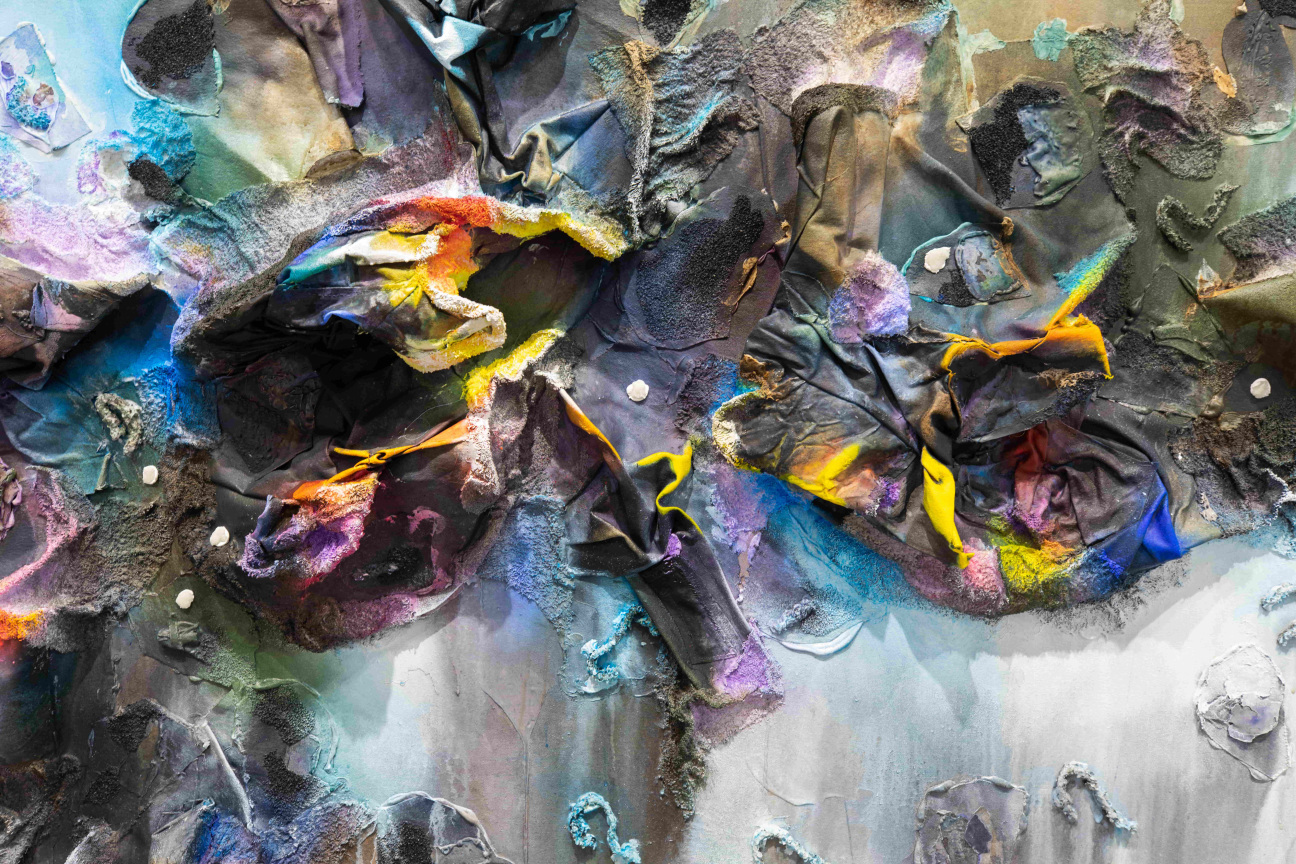
The show’s curator, Elena Ketelsen González, also sees Martinez’s process as exemplifying the term rasquachismo, coined by the scholar Tomás Ybarra-Frausto to describe art rooted in Chicano experiences of resourcefulness. “Often people talk about it as an aesthetic, as having to do with the making of altars, or low-riders, or Mexican velvet painting,” González explains. “But in Leslie’s work, it’s actually a methodology of reuse—looking at something and thinking, That can get transformed into something else.” For Martinez, the concept is also connected to family history: Their grandparents were migrant farm workers for whom repurposing objects was part of a daily struggle to adapt and survive.
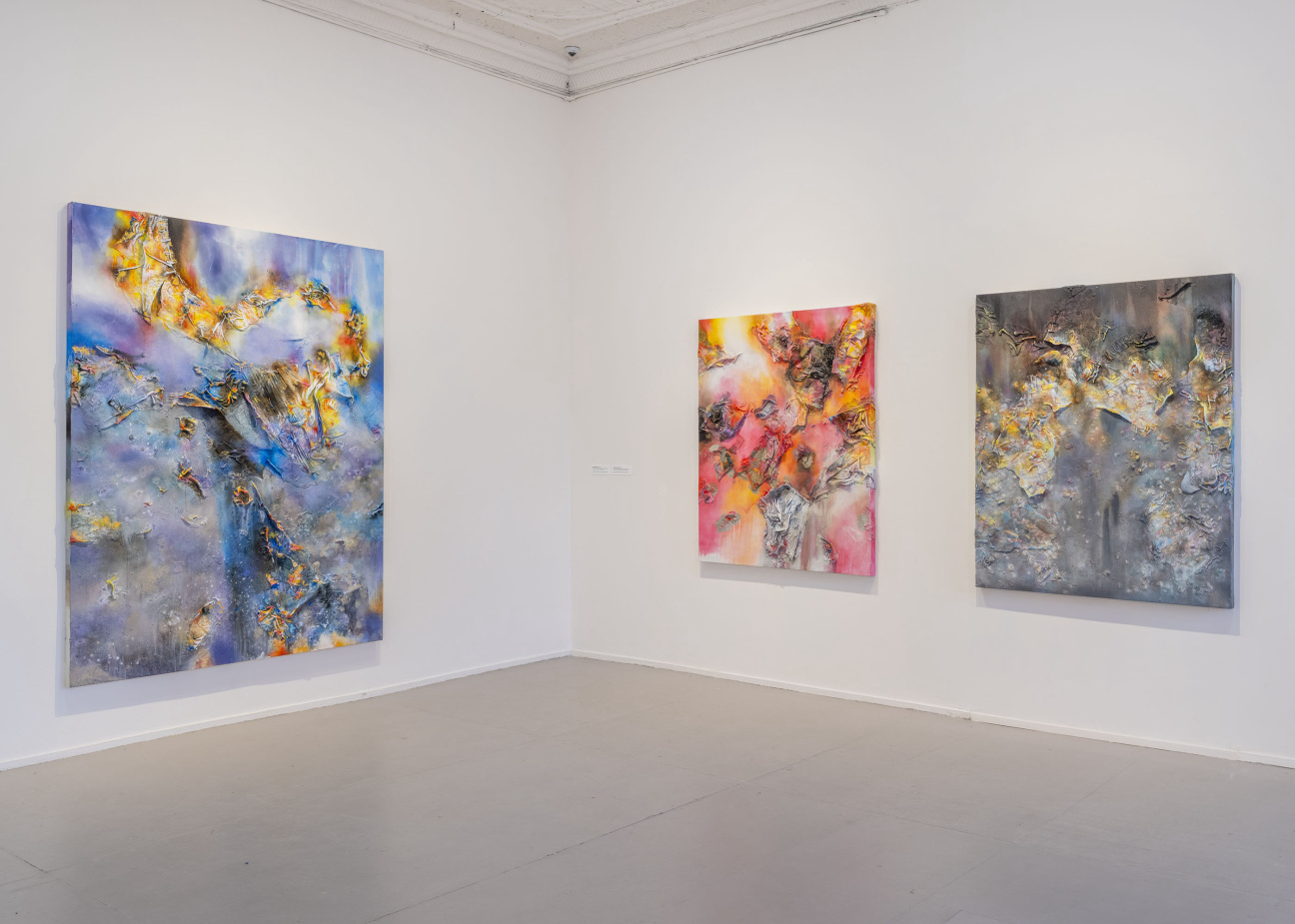
Also inspirational for Martinez are artists such as Lynda Benglis and Jack Whitten, “people who are bold and brave with material.” The example of Whitten, known for his intensive dedication to process, also influenced Martinez’s decision to leave the Northeast for their family home base of Dallas after completing a Yale MFA in 2018. “There was this desire to prove that you don’t have to live in New York to show here and build a career as an artist, if you can go somewhere where you can just dive in,” Martinez explains. “I went home to burrow my head and focus on figuring out what I wanted to do.”
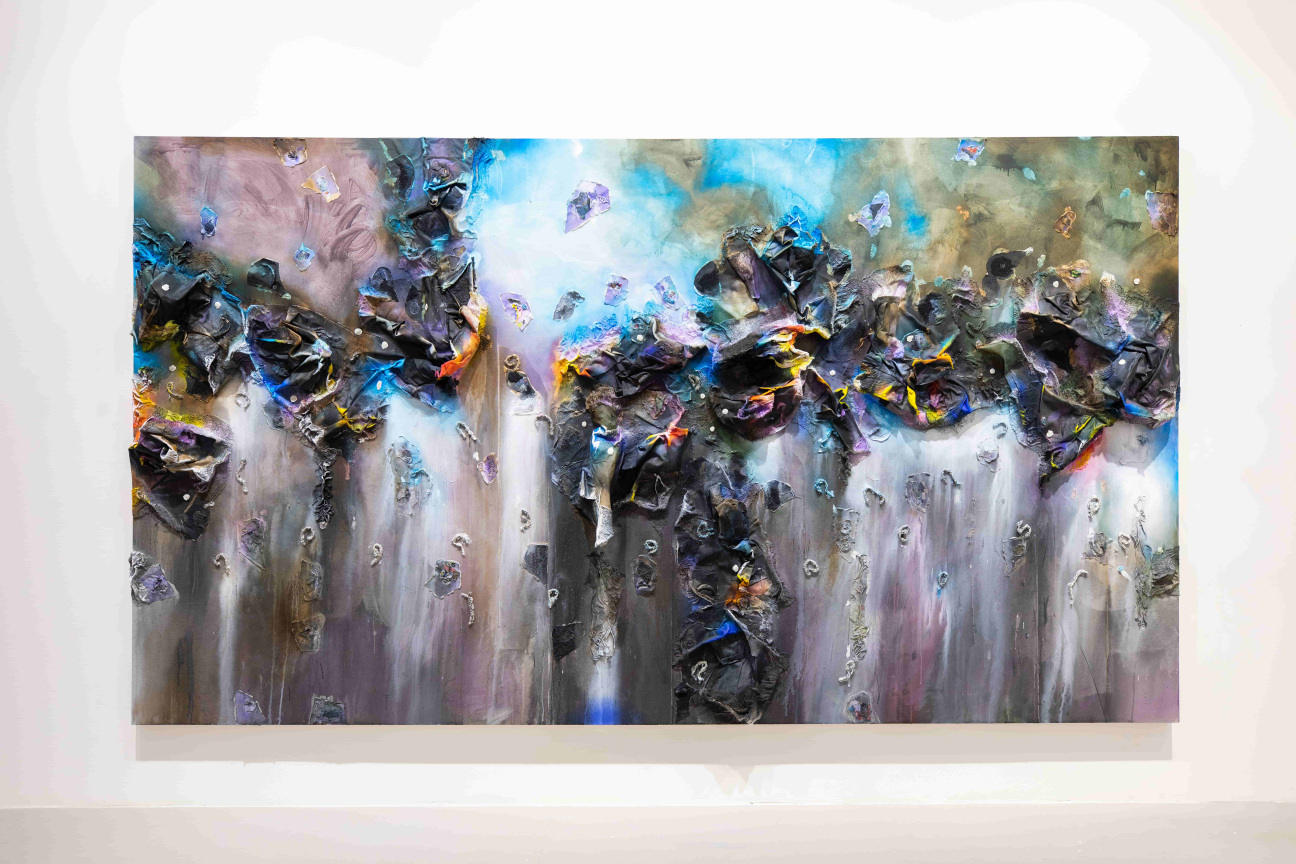
In Dallas, with ample space to spread out in the studio and the support and encouragement of their parents and two sisters, Martinez started to work on a larger scale and, after a long period of painting in black, white, and gray, embraced bold color. “I didn’t use color until I started my hormonal transition,” Martinez recalls. “I think it was about release and joy and comfort and freedom, just coming into oneself.”
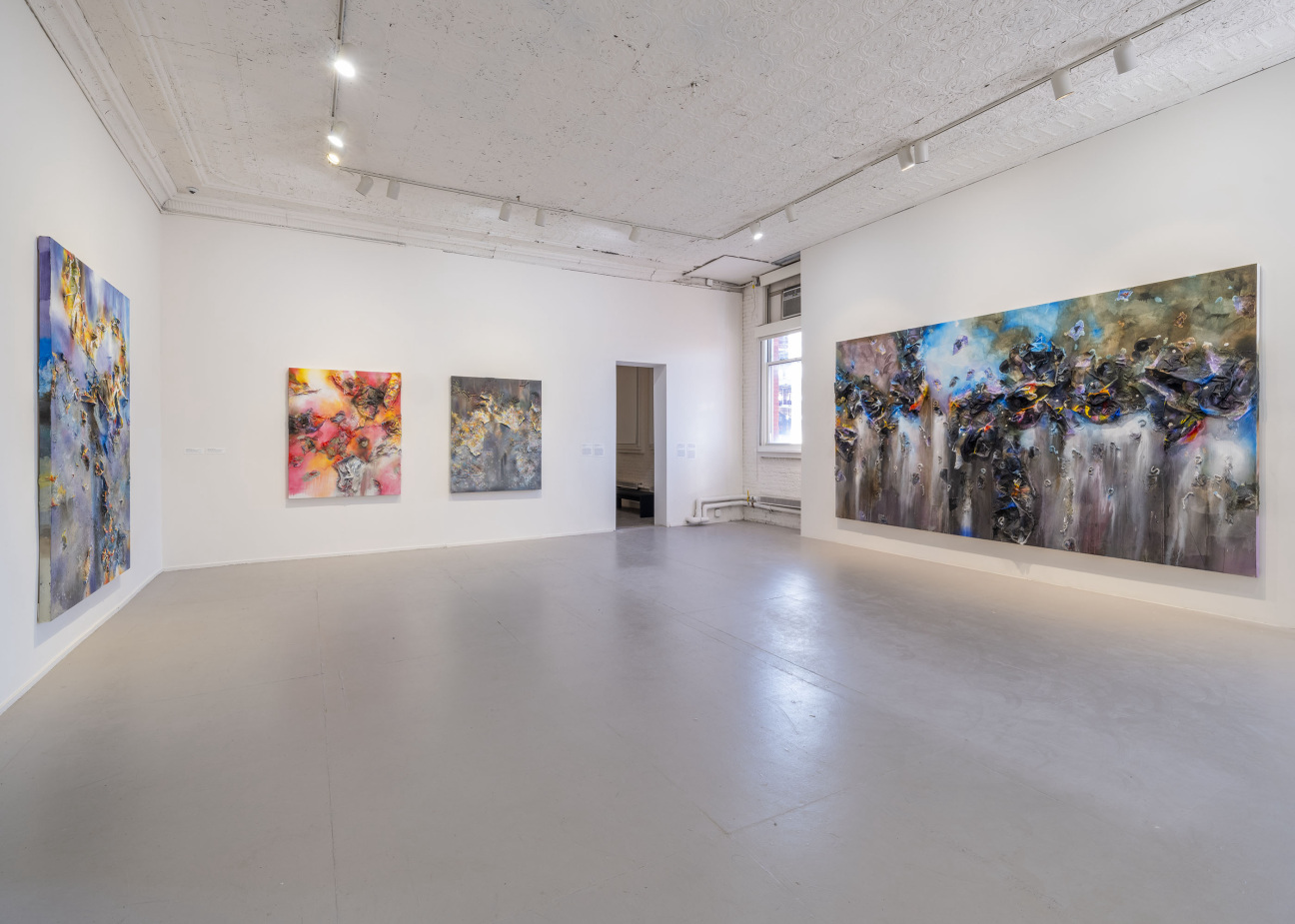
Among the show’s new commissions are two multipart paintings that sprawl across several canvases and extend into three dimensions. In the seven-panel work The Reconstitution of Rejected and Refracted Voids, 2023, which has been installed so that it wraps around a corner of the gallery, fragments of mylar balloons, mica, and iridescent cellophane and flashes of yellow and orange create a shimmering effect against cloudy washes of lavender and gray.
Despite the bright and sparkly touches, the mood is not entirely festive; the theme of refraction was inspired by the artist’s perception of a fragmented and polarized media landscape. “The yellows and warm tones are embers of something that has been burnt down,” Martinez says, “but it can also feel more hopeful, like a re-emergence.”
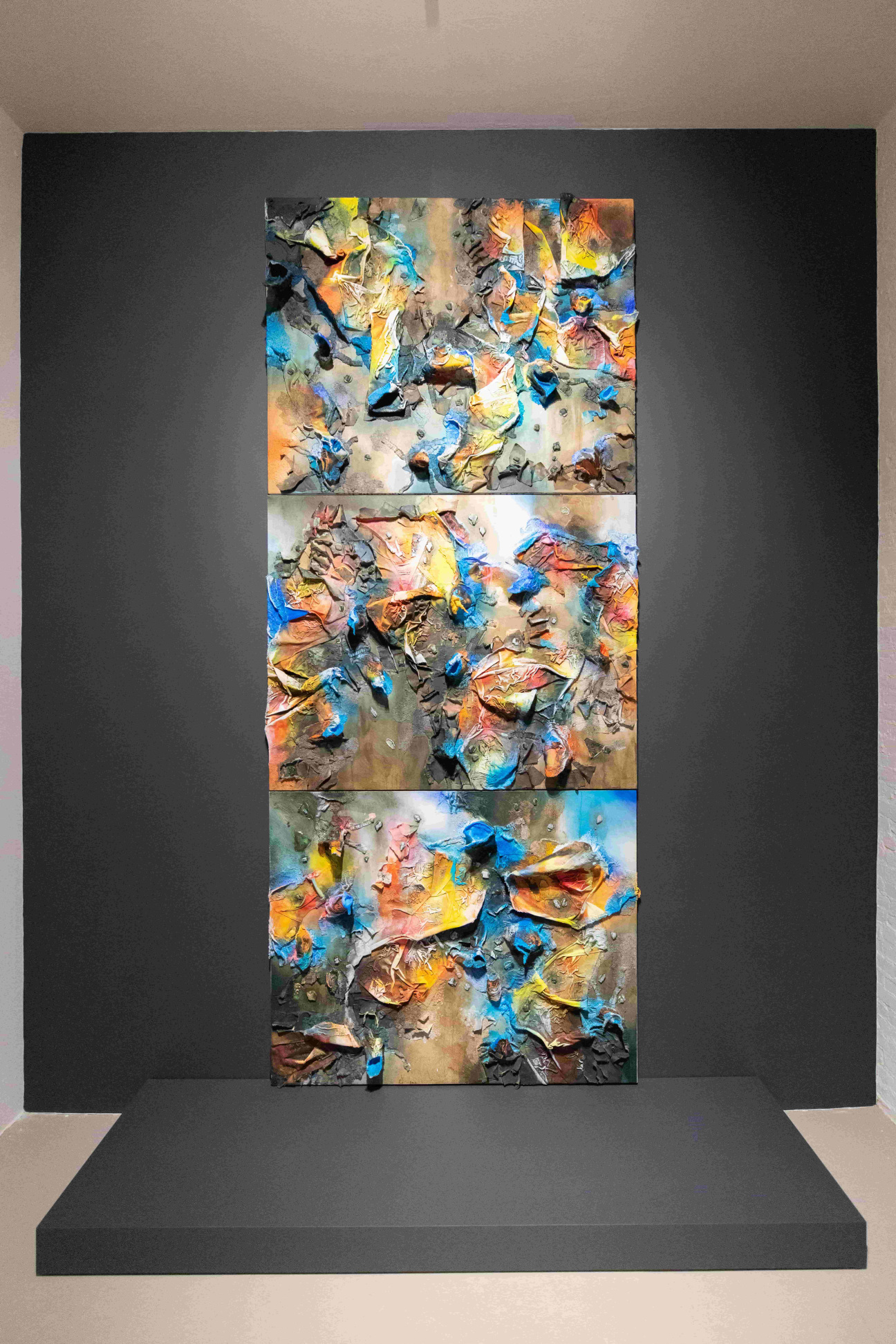
Meanwhile, the triptych titled The Foam of a Violent Shake (Don’t Tread on Me), 2023, with its serpentine forms of pinched canvas, subverts the rattlesnake motif from the Gadsden Flag (often used, today, by right-wing extremists). Martinez conceived of the piece, which is stacked vertically in a narrow gallery and has a totemic heft, as a “monument to lost rights” with an emphasis on threats to reproductive freedom and bodily autonomy.
“The word formation, in this show, has a lot to do with the human desire to self-determine and these fights against it from outside pressures or political systems,” Martinez says. “I choose how I want to be. I’m in formation.”
“Leslie Martinez: The Fault of Formation” is on view from November 16, 2023 to April 8, 2024 at MoMA PS1.










 in your life?
in your life?

